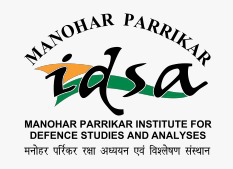Central Asia and the Ukraine Crisis
The Central Asian states have had to deal with significant economic and security challenges in the wake of the Russia–Ukraine conflict.
- Jason Wahlang
- April 27, 2022
The Central Asian states have had to deal with significant economic and security challenges in the wake of the Russia–Ukraine conflict.
The Russia–Ukraine conflict has put Kazakhstan’s foreign policy to a severe test. Though there are similarities between Ukraine and Kazakhstan, the NATO factor doesn’t exist in the case of the latter. In Kazakhstan’s approach to the Russia–Ukraine conflict, it is possible to discern a distinct tilt towards Russia.
With the failure of moderates’ Western outreach in the aftermath of US withdrawal from the JCPOA, the conservatives, now in power in Iran, are looking for a long-term partnership with Russia which would bring stability in their shared neighbourhood, geoeconomic opportunities and also weaken the influence of moderates and reformists.
China’s growing military presence in Central Asia through military exercises, trainings, extending arms assistance and building military infrastructure, has an impact not only on the region but also its neighbours, especially Russia and India.
Neither Russia and China nor the Central Asian countries have a clear strategy on how to handle the rapidly changing canvas in Afghanistan. An ambivalent waiting game tied by slow calibrated response has become the sine qua non strategy for the stakeholders in Afghanistan.
Ladakh is one of the largest administrative units in India, in terms of its territory. Due to its contiguity with Xinjiang and Tibet and its close proximity to Central Asia, and enjoying a central position in the network of overland caravan routes that were linked to the Silk Route, Ladakh acted as an important gateway in the Indo-Central Asian exchange of men, materials and ideas through the ages.
The international security environment has undergone many changes since the end of the Cold War. There has been a need to adapt the concept of security with the changing conditions and new security situations emerging in different geopolitical locales of the world. The concept of human security gained currency in the wake of international developments in the 1990s following the end of the Cold War. New security threats were identified by scholars and analysts the world over. There was a shift in the way security was conceptualised, i.e.
India needs to rope in one or more of the Central Asian countries, preferably Uzbekistan and Kazakhstan, in the Chabahar project, to fully exploit its potential.
As India enters the Eurasian integration path, it needs to be aware that there is an emerging trend in favour of intra-regional cooperation in Central Asia.
Despite the opacity of Central Asian politics, the course of political change in the region is likely to be smooth, which is also essential for peace and stability within and outside Central Asia.



